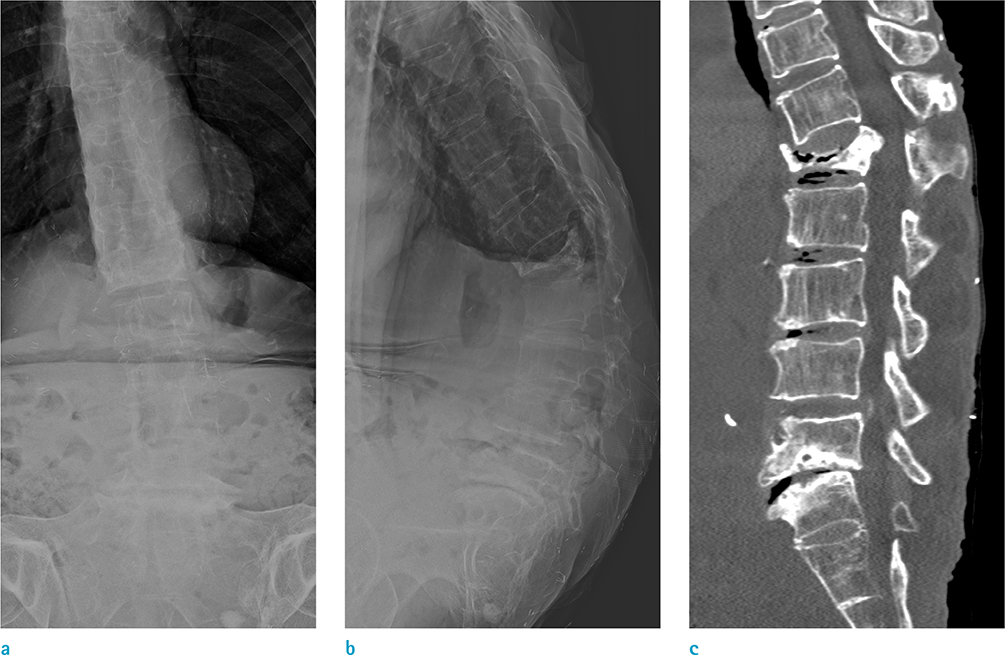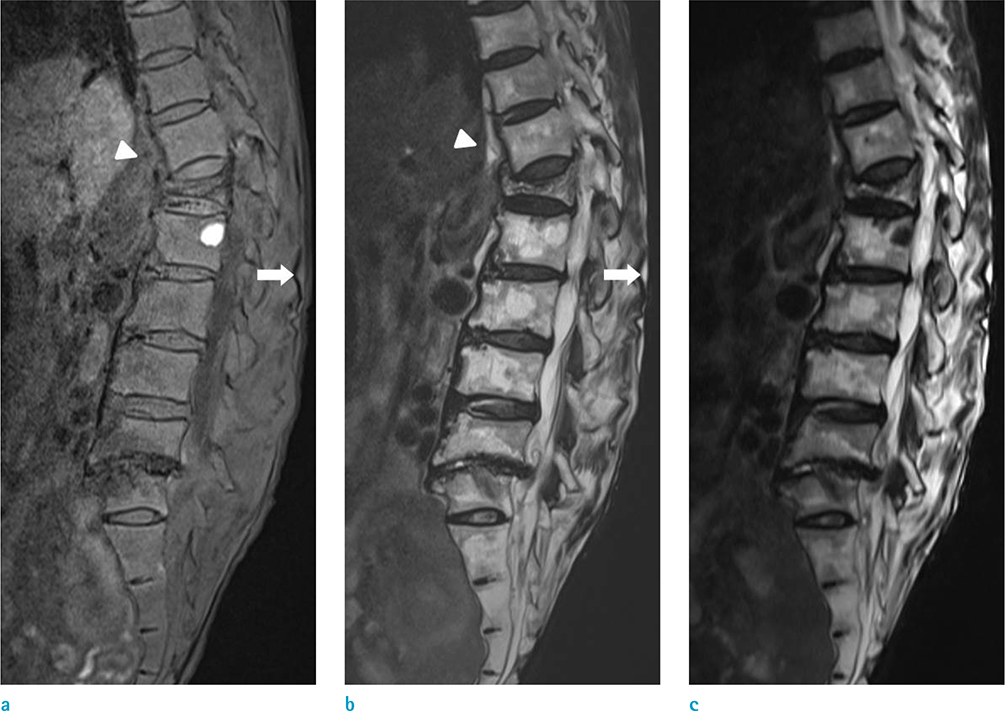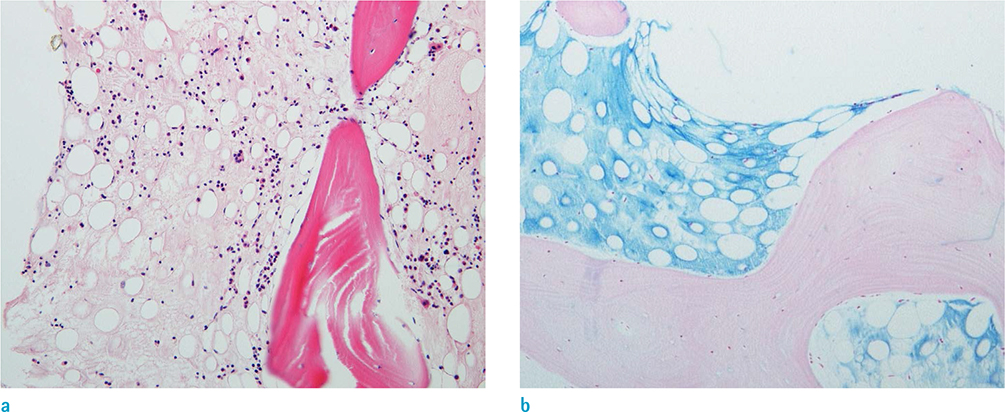Investig Magn Reson Imaging.
2018 Mar;22(1):50-55. 10.13104/imri.2018.22.1.50.
Gelatinous Transformation of Bone Marrow Mimicking Malignant Marrow-Replacing Lesion on Magnetic Resonance Imaging in a Patient without Underlying Devastating Disease
- Affiliations
-
- 1Department of Radiology, Gangnam Severance Hospital, Yonsei University College of Medicine, Seoul, Korea. agn70@yuhs.ac
- 2Department of Pathology, Green Cross Laboratories, Gyeonggi-do, Korea.
- 3Department of Orthopaedic Surgery, Gangnam Severance Hospital, Yonsei University College of Medicine, Seoul, Korea.
- KMID: 2408817
- DOI: http://doi.org/10.13104/imri.2018.22.1.50
Abstract
- Gelatinous transformation of bone marrow is characterized by hypoplasia of fat cells with focal loss of hematopoietic cells and deposition of extracellular gelatinous substances. It is known to be associated with devastating underlying diseases that starve bone marrow. Here, we present a case of a patient whose magnetic resonance (MR) imaging findings of vertebral column were interpreted as metastasis or hematologic malignancy, however, the final diagnosis revealed a gelatinous transformation of bone marrow. This is the first report of gelatinous transformation of bone marrow without evidence of underlying devastating disease.
Keyword
MeSH Terms
Figure
Reference
-
1. Bohm J. Gelatinous transformation of the bone marrow: the spectrum of underlying diseases. Am J Surg Pathol. 2000; 24:56–65.2. Sen R, Singh S, Singh H, Gupta A, Sen J. Clinical profile in gelatinous bone marrow transformation. J Assoc Physicians India. 2003; 51:585–588.3. Seaman JP, Kjeldsberg CR, Linker A. Gelatinous transformation of the bone marrow. Hum Pathol. 1978; 9:685–692.
Article4. Vande Berg BC, Malghem J, Devuyst O, Maldague BE, Lambert MJ. Anorexia nervosa: correlation between MR appearance of bone marrow and severity of disease. Radiology. 1994; 193:859–864.
Article5. Hanrahan CJ, Shah LM. MRI of spinal bone marrow: part 2, T1-weighted imaging-based differential diagnosis. AJR Am J Roentgenol. 2011; 197:1309–1321.
Article6. Feng CS. Gelatinous transformation of marrow in a case of acute myelogenous leukemia post-chemotherapy. Am J Hematol. 1991; 38:220–222.
Article7. Ifrah N, Saint-Andre JP, de Gentile L, et al. Gelatinous transformation of the bone marrow: manifestation of an acute leukemia. Acta Haematol. 1989; 82:165–168.
Article8. Chong A, Song HC, Oh JR, et al. Gelatinous degeneration of the bone marrow mimicking osseous metastasis on 18F-FDG PET/CT. Clin Nucl Med. 2012; 37:798–800.
Article9. Brennan CM, Atkins KA, Druzgal CH, Gaskin CM. Magnetic resonance imaging appearance of scurvy with gelatinous bone marrow transformation. Skeletal Radiol. 2012; 41:357–360.
Article10. Stroup JS, Stephens JR, Baker DL. Gelatinous bone marrow in an HIV-positive patient. Proc (Bayl Univ Med Cent). 2007; 20:254–256.
Article
- Full Text Links
- Actions
-
Cited
- CITED
-
- Close
- Share
- Similar articles
-
- A Case of Anorexia Nervosa with Gelatinous Transformation of Marrow
- A Case of Gelatinous Transformation of Marrow in a Patient with Congestive Heart Failure in Malnutrition
- MR Imaging of the Bone Marrow
- Differential Diagnosis of Vertebral Lesion by Magnetic Resonance Imaging
- Gelatinous transformation of the bone marrow in hepatocellular carcinoma





